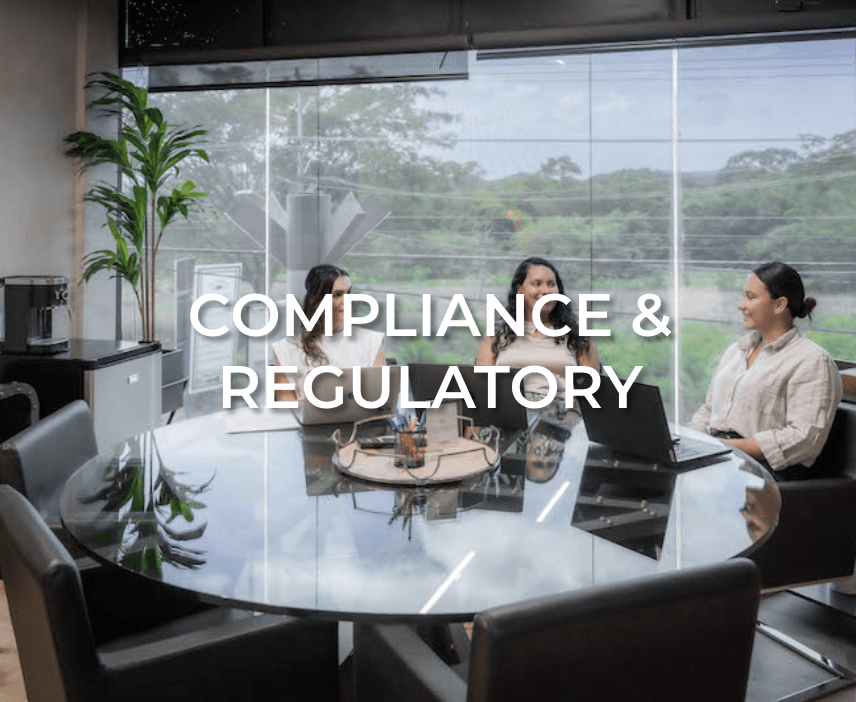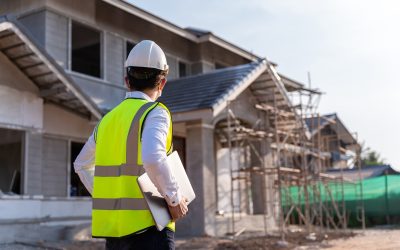Understanding Water Availability In Costa Rica. What Do You Need To Know?
by Quatro Legal Real Estate Team | June. 28, 2024 | Article, Real Estate

A key element when buying or selling property, building, and developing land, especially when it comes to vacant lots, is understanding the cumbersome topic of water availability. In our experience, many transactions or property purchases suffer setbacks due to this matter; hence, we wanted to address the topic.
Costa Rica has only two seasons: dry and rainy seasons (or what locals call “winter”). The rainy season usually starts in April and runs all the way to early December, with its peak being during -September and October when the most intense rainfalls commonly occur. So, in general terms, it rains for eight consecutive months.
For a country that sees this much rain, it’s ironic to think that we have issues with water availability, but we do, especially in the coastal region.
We will develop the water situation in Costa Rica across several of these blog posts, as it is a vast and complex subject that entails several elements: technical, environmental, legislation, red tape, and climate change, among others. Also, even though there are certain generalities, each region has a different situation regarding water. This means every transaction done in a different region must have its own due diligence investigation.
For now, let’s start at the beginning. How is water managed in Costa Rica?
For real estate purposes, water is managed by three entities:
1. The Water Department of the Ministry of Environment and Energy.
2. The Institute of Aqueducts and Sewage in Costa Rica (“AyA” per its acronym in Spanish).
3. The Administrative Associations for Aqueducts and Sewers (“ASADAS” per its acronym in Spanish).
1. Water Department
The Water Department is part of the Ministry of the Environment and Energy (“MINAE” per its acronym in Spanish). They are responsible for the national water resource administration to dispose of and resolve its domain and use. Hence, the Water Department will be involved if you consider drilling a well and/or using bodies of water (e.g., rivers or underground water).
2. AyA
The AyA is a state institution responsible for setting policies, direction, execution, promoting, planning, financing, and developing the supply of drinking water, as well as the collection and treatment of ordinary sewage; they are also responsible for designing and operating drinking water and sanitary sewage systems for the entire country. Hence, if you need a water connection for drinking water, AyA will be involved.
3. ASADAS
In more rural areas, the AyA delegates part of its responsibilities to the ASADAS. ASADAS are non-profit associations that are solely responsible for the community management of the public services of drinking water supply and wastewater sanitation.
ASADAS are public-community alliances between the AyA and community residents that conform the ASADAS. ASADAS work like a local agency of the AyA. However, they are regulated, supervised, managed, and controlled by the AyA.
Hence, if you need a water letter to confirm there is drinkable water in a property located in an area with an ASADA, you will need to obtain this from the ASADA and not the AyA.
Type of water letters
For the purpose of this blog, it is key to understand the type of water letters that the ASADAS/AyA can issue:
a) Service availability letter (Constancia de disponibilidad de servicios in Spanish): Confirms the real and existent water and hydraulic capacity, as well as water treatment and recollections in one of the adjacent properties, that could lead to an eventual water connection to determined property.
This type of letter can confirm:
- Water availability letter (Disponibilidad de servicio para abastecimiento de agua in Spanish): Confirms the real and current (not future or potential) infrastructure and water availability to provide water services.
- Hydraulic capacity letter (Capacidad hidráulica in Spanish): Confirms the existence of installed and in-use infrastructure for the water supply and sanitation that can provide the correct, proper, and legal provision of services.
- Collection and treatment letter (Disponibilidad de servicio de recolección y tratamiento in Spanish): Confirms the real and current (not future or potential) capacity to collect and treat wastewater.
This is the ideal letter for any real estate transaction; however, it’s unusual to see, especially in rural areas such as Guanacaste.
This letter allows the filing of the needed permits and authorizations for the construction of any real estate project. The letter will determine the technical capacity of the aqueduct.
This letter guarantees that water will be supplied to the property. It is a consolidated right of the property owner to have access to a water connection. The owner can enforce the letter before a courthouse if the ASADAS/AyA decides not to provide the service.
Positive water letters issued for family houses or small commercial projects are valid for 12 months, which can be extended before its due date for 24 additional months when requested. The validity of water letters issued for real estate developments can be adjusted based on the term established for the development design, as per the developer’s request.
b) Water capacity letter (Capacidad hídrica in Spanish): Confirms the real and present water capacity with technical feasibility subject to the owner implementing the proper infrastructure. This letter is issued when granting a service availability letter is impossible due to the lack of infrastructure.
This is the most common letter we see when performing a due diligence, especially in Guanacaste.
Usually, the ASADAS/AyA do have water flow to provide water but do not have the proper infrastructure to bring water to the property. In these cases, the property owner shall pay for, build, and provide the needed infrastructure to connect and bring water to the property, as per ASADAS/AyA’s technical criteria and prior approval.
This letter allows the owner to obtain the needed permits for the construction of the infrastructure to provide water to the property to then obtain the service availability letter to develop the real estate project. The law allows the owner to file for the building permits for the real estate project to develop on the land and the permits for the infrastructure for the water simultaneously. Quatro Legal recommends inquiring about this to your building team.
This letter guarantees that water will be supplied to the property once the infrastructure is provided per the ASADAS/AyA’s technical criteria and prior approval.
Positive water letters are valid for 12 months, which can be extended before its due date for 24 additional months when requested.
c) Existent service letter (Constancia de servicios existentes in Spanish): Confirm the real and existent water flow service already provided to a specific property per the AyA’s database.
This letter is useful for lots and houses that already have a connected service, specifically as it shows the water flow that the property has. This letter can be key for houses intended to be used for commercial projects.
d) Analysis of technical feasibility to provide services (Análisis de factibilidad técnica para el otorgamiento de los servicios in Spanish): This is a verification process in which AyA determines the existence of real and current water, hydraulic, material, technical, legal and environmental resources to grant a water availability letter for future connection of the service.
This letter can be useful for property development in the future. However, from a legal perspective, as well as to provide more value to the land, it is better to obtain a Service availability letter due to its nature explained above.
e) Water service connection (Conexión de servicio de agua in Spanish): This certifies a physical and existing connection between the public water network and the owner’s property using a water meter. By means of this connection, the service is provided, and a fee is paid on a monthly basis.
With this letter, the existence of the water connection in the property cannot be questioned. However, requesting an existent service letter is advisable to confirm the scope of the service already provided to corroborate it is useful for the owner intention on the property.
These letters are essential to understanding the property’s water situation, defining what the owner/buyer can develop, and determining the property’s accurate value based on its real possibility of development.
However, the problem begins when the ASADA/AyA stops granting Service availability letter and Water capacity letter, as this impacts the purchase of vacant lots due to its impossibility of obtaining building permits and legally developing the property. This issue will be addressed in the following blog, where we will explain 1) Reasons why the ASADA/AyA will not grant these letters (again, it rains for eight months!) and 2) if drilling a well is an alternative solution. Stay tuned!
For more information on this and other matters, please reach out to Sonia Aragon at sam@quatro.legal
Get To Know Quatro Legal

We’re bringing empathy and excellence back to legal counseling. Quatro Legal is built on a bedrock of kindness, a passion for service, and a commitment to guiding you through your legal challenges with ease.
OUR SERVICES
EXPLORE BY
category
REAL
ESTATE
LIFESTYLE
TESTIMONIALS
All Rights Reserved 2023 | Privacy













